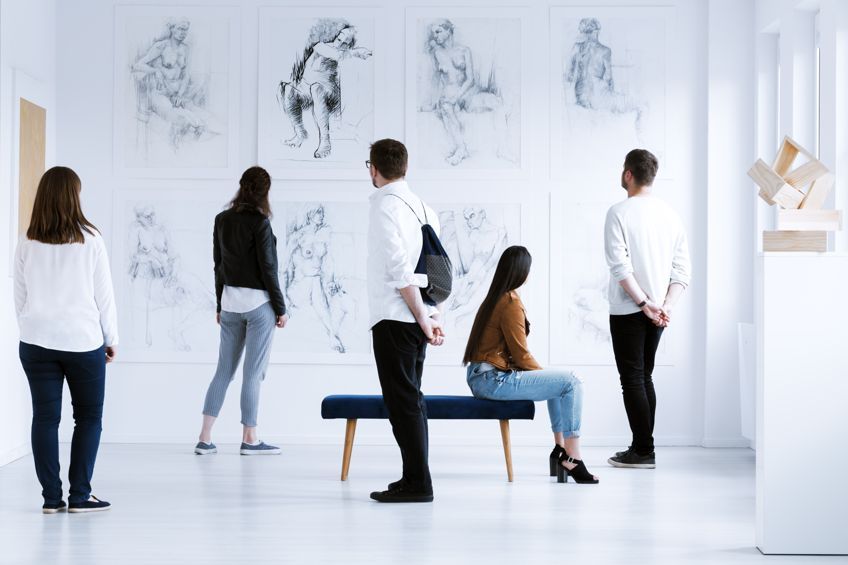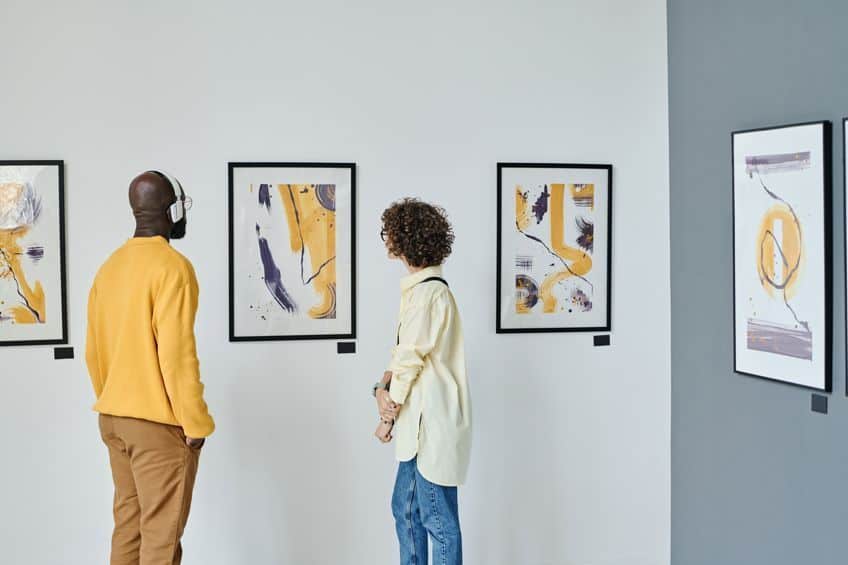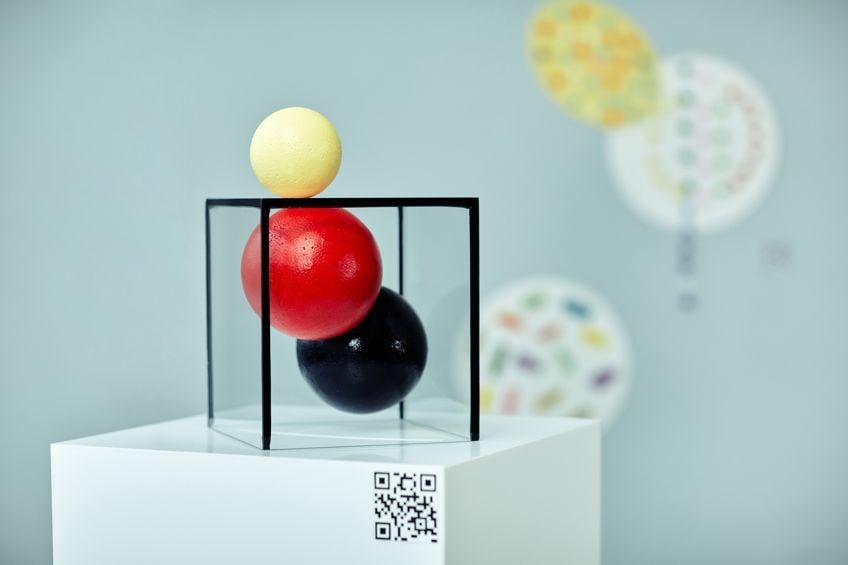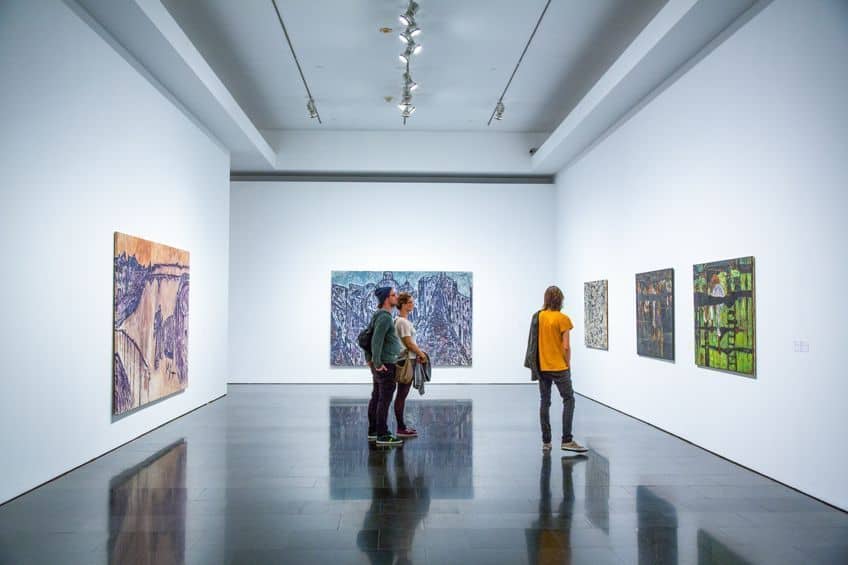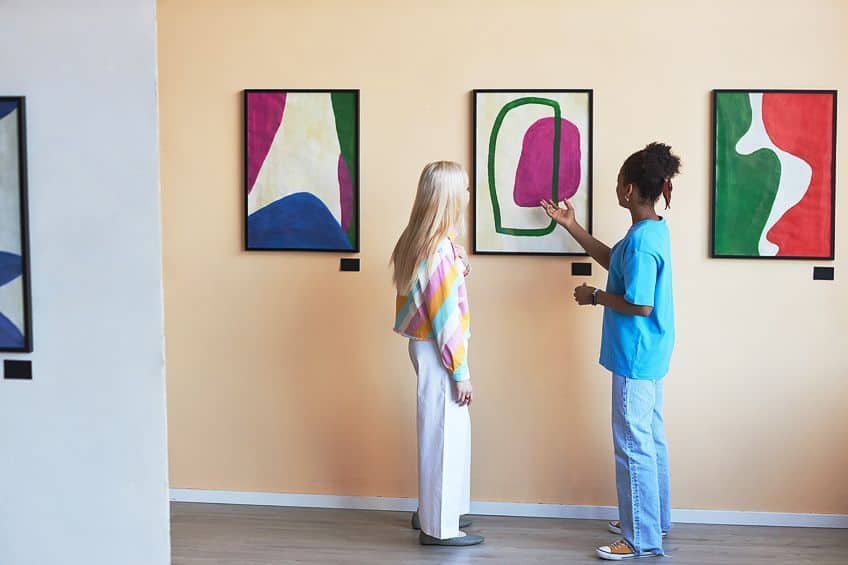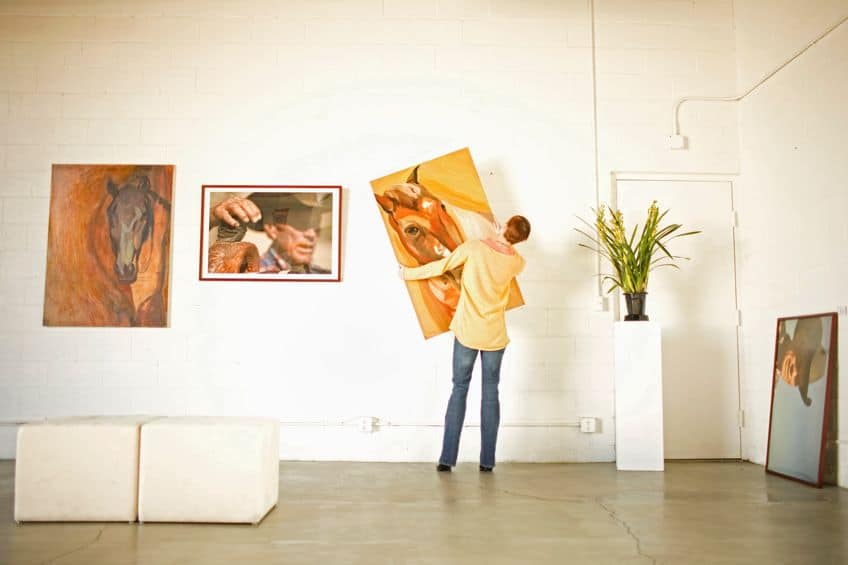Is Art Subjective? – Exploring the Way Art Makes Us Feel
Art has always been a subject of debate and discussion, with questions about its nature, purpose, and value frequently raised. One of the most common debates surrounding art is the question, “is art subjective?”. Some argue that art is entirely subjective, that it is a matter of personal taste and preference, and therefore has no objective criteria for evaluation. Others maintain that art is objective, and that there are universal principles that make some works of art better than others. This article seeks to address the questions, “is art subjective?”, “does something like objective art exist?”, and “what creates subjectivity in art?”, by exploring the different perspectives on this matter and offering some insights into the nature of art itself.
Defining Art: The Importance of Discussing Subjectivity in Art
Defining what art is has been a challenging task for centuries, as it encompasses a vast range of creative activities and expressions that can vary widely in form, content, and meaning. However, art can generally be understood as a form of human expression that conveys ideas, emotions, or experiences through a variety of mediums, such as painting, sculpture, music, literature, film, and performance. Let us consider why this question is essential to discuss.
How We Perceive, Evaluate, and Appreciate Art
The subjectivity of art is an essential topic of discussion because it affects how we perceive, evaluate, and appreciate art. If we believe that art is entirely subjective, then there are no objective criteria for evaluating it, and everyone’s opinion is equally valid. However, if we view art as objective, then some works may be considered objectively better than others based on specific criteria.
These include skill, originality, or expression of a particular idea or emotion.
Cultural and Social Context Issues
The question of art’s subjectivity also raises issues concerning cultural and social contexts, as what may be considered great art in one culture or time period may not be appreciated in another. Moreover, considering the subjectivity of art can lead to discussions about personal taste, bias, and power structures that shape our understanding and interpretation of art.
Why Is Subjectivity in Art a Controversial Question?
The controversy surrounding this topic arises from the fact that both positions have their strengths and weaknesses, and there is no easy way to reconcile them. Those who argue for art’s subjectivity point out that different people may have vastly different reactions to the same piece of art, and that the meaning and significance of art may be influenced by social and cultural factors.
However, those who argue for art’s objectivity claim that certain works of art have endured for centuries and are still celebrated today, indicating that there are universal qualities that make some art superior to others.
The Case for Subjective Art
Ultimately, the debate over the subjectivity of art touches on fundamental questions about the nature of creativity, beauty, and human perception, and it has significant implications for how we value and appreciate art. By exploring the arguments for and against art’s subjectivity, we can gain a deeper understanding of how we engage with art and the role it plays in our lives. Let us first look at the argument for subjectivity in art.
Why Is Art Subjective: A Matter of Personal Taste
The argument that art is subjective rests on the idea that the value and meaning of art are dependent on individual preferences and personal experiences. One of the major aspects adding to the subjectivity of art is the matter of personal taste. Taste is a modern consideration in the value of art, and it refers to the individual’s preference for certain styles, techniques, or subject matter in art. In the past, traditional notions of art were based on fixed criteria such as beauty, harmony, and representation, and the value of art was determined by how closely it adhered to these criteria.
However, with the rise of modern art, these criteria were broken down, and art became almost undefinable.
The Role of the Modern Era in Subjective Art
The rise of Modern art in the late 19th and early 20th centuries marked a significant break from traditional art forms and values and played a key role in the shift towards subjective art. Modern artists sought to challenge the traditional forms and styles of art and instead focused on exploring new ideas, concepts, and techniques.
One key aspect of this shift was the rejection of traditional representational art, which aimed to accurately depict the world as it appeared. Modern artists rather embraced abstraction, focusing on the use of pigment, shape, and consistency of the paint, for example, to create works that were more about emotion and expression than representation. This move towards abstraction made it harder to evaluate art based on traditional objective criteria such as technical skill or composition.
Another important factor in the shift towards subjective art was the rise of individualism and personal expression in art. Modern artists began to prioritize their own personal experiences and feelings over the depiction of objective reality, leading to a greater emphasis on individual interpretation and subjectivity.
The rise of Modern art also challenged the traditional role of the artist as a skilled craftsman, and instead emphasized the importance of artistic vision and intention. This shift led to a greater focus on the artist’s personal perspective and creative process, making it more difficult to evaluate art objectively.
The Cultural and Societal Impacts on Subjectivity in Art
Different individuals can have considerably different responses to the same piece of art, highlighting the subjectivity of art. For example, one person may find Picasso’s cubist painting, Les Demoiselles d’Avignon (1907), to be a masterpiece of modern art, while others may see it as a jumbled mess. The cultural and societal impacts that create our perceptions of art also play a significant role in its subjectivity.
For instance, certain cultures may value art for its religious or spiritual significance, while others may value it for its aesthetic appeal or commercial value.
Objective Art: Questioning Subjectivity in Art
Art has been a subject of debate among philosophers, artists, and art critics for centuries. The debate regarding the subjectivity of art revolves around whether art can be evaluated objectively or whether it is merely a matter of personal taste. While some may argue that art is entirely subjective, the argument against the subjectivity of art is based on the idea that there are objective criteria for evaluating art.
Technical Skill
One of the primary objective criteria for evaluating art is technical skill. Technical skill refers to the artist’s ability to manipulate materials and create a coherent work of art. Technical skill is an essential aspect of artistic creation, as it allows an artist to express their ideas and vision effectively.
For instance, a skilled sculptor can create a life-like sculpture that accurately captures the human form and conveys emotion and movement through its composition.
Composition
Another objective criterion that can be used to evaluate art, is composition. Composition refers to the arrangement of elements within the work of art. It includes elements such as color, form, texture, and line, and the principles that govern their arrangement, such as balance, proportion, and symmetry. The design of an artwork can significantly influence its emotional impact on the observer. A well-composed painting can create a sense of harmony, balance, and beauty, while a poorly composed work of art can create a sense of disharmony and discord.
Context
Lastly, context plays a crucial role in interpreting and evaluating art objectively. Comprehending the historical, cultural, and social context in which an artwork was created can give insights into its essence and importance. A work of art created during a time of war or social upheaval may have a different meaning and significance than a work of art created in a time of peace and prosperity. Historical and cultural background is an objective criterion that refers to the circumstances in which a work of art was created. Understanding this context can help provide more in-depth knowledge of the work’s purpose and value. For example, a painting created during the Renaissance period may have been influenced by the cultural and philosophical movements of the time, such as humanism and the revival of classical art.
Knowledge of these influences can help us understand the work’s themes, symbolism, and style.
The Artist’s Purpose
The artistic intention is also an objective criterion that can influence our understanding and evaluation of a work of art. An artist’s intention behind creating a work of art can deliver an understanding of its connotation and importance. For example, a painting that is intended to evoke a particular emotion or convey a political message can be evaluated based on how effectively it communicates that message.
Influence and Innovation
Another objective criterion is influence and innovation which refers to the impact a work of art has had on other artists and the wider cultural landscape. This measure can be used to assess the work’s originality, creativity, and influence. For example, Van Gogh’s use of bright colors and bold brushstrokes in his paintings was groundbreaking at the time and had a significant impact on the development of modern art. Understanding the influence and innovation of a work of art can help us appreciate its place in the history of art and its contribution to artistic development.
Additionally, this criterion can also help us evaluate the quality and value of the work, as a highly influential and innovative work may be considered more valuable than one that has had little impact.
The Middle Ground
The debate between subjectivity and objectivity in art is complex and multifaceted. While it is true that our individual responses to art are shaped by personal taste and subjective experience, there are also objective criteria that can be used to evaluate and compare works of art. However, a nuanced view that takes into account both personal interpretation and objective criteria may be the most reasonable approach.
Personal Interpretation
The middle ground in this debate acknowledges that personal interpretation and emotional response play a significant role in our appreciation of art. Art is a form of expression that can evoke a range of emotions, from joy and wonder to sadness and despair. Each person brings their own unique perspective and experiences to their interpretation of a work of art.
Therefore, it is important to recognize that there is a degree of subjectivity in our individual responses to art.
Objective Criteria
However, this does not mean that art is entirely subjective. There are objective criteria that can be used to evaluate and compare works of art. These criteria include technical skill, composition, and artistic intention, as well as the historical, social, and cultural context in which a work of art was created. These objective criteria provide a basis for comparing and evaluating works of art and can lead to more objective evaluations.
Practical Application of the Middle Ground Argument
The middle ground between subjectivity and objectivity suggests that we can appreciate and value art both for its personal and emotional impact and for its technical and historical significance. For example, a painting may be admired for its beauty and emotional resonance, while also being recognized for its skillful use of color and composition or its historical context.
In practice, this approach might involve recognizing that our personal responses to art are valid while also engaging in discussions about the objective criteria that contribute to a work of art’s value and significance. It might involve acknowledging that different people may have different interpretations and emotional responses to a work of art while also considering its technical skill, composition, and cultural context.
In conclusion, the debate over the question, “is art subjective or not?”, is a complex and multifaceted issue. While some argue that art is entirely subjective and personal taste plays the most significant role in its evaluation, others suggest that objective criteria such as technical skill, composition, and artistic intention can be used to assess and compare works of art. A more nuanced view recognizes that both personal interpretation and objective criteria are essential for understanding and evaluating art. Art cannot be reduced to a set of objective standards, but neither can it be viewed as purely subjective. Historical and cultural context, influence and innovation, and the role of intention and context all play a part in evaluating art objectively. Ultimately, art is both subjective and objective, and the debate between the two will likely continue to spark controversy and discussion in the art world for years to come.
Frequently Asked Questions
Why Is Art Subjective?
Art is subjective because it is inherently based on personal interpretation and individual experience. Each person brings their own unique perspectives, emotions, and biases to their understanding and appreciation of art. What one person considers beautiful or meaningful may not be the same for another person. Additionally, art can elicit a wide range of emotional responses, and these responses are highly subjective and can vary greatly from person to person. While there may be some objective criteria for evaluating art, ultimately, the subjective experience of the viewer plays a significant role in how art is perceived and valued.
Why Is Subjectivity in Art a Controversial Debate?
Subjectivity in art challenges traditional notions of objective truth and value and is, therefore, a controversial debate. In many fields, objective criteria can be used to evaluate the quality of a product or service, but art presents a unique challenge in that it is subjective and open to interpretation. This means that there is no universal standard for evaluating art, and different people can have vastly different reactions to the same piece of art. This subjectivity can make it difficult to establish a consensus on the value and significance of a work of art, leading to heated debates and disagreements. Additionally, the concept of subjectivity challenges the idea of a definitive interpretation of a work of art, which has been a longstanding goal of art criticism and analysis.
How Can Art Be Seen As Objective?
When certain criteria are used to evaluate and compare works of art, art can be seen as objective. These objective criteria may include technical skill, composition, artistic intention, historical and cultural context, and influence and innovation. Technical skill refers to an artist’s ability to manipulate materials and create a coherent work of art, while composition refers to the arrangement of elements within the work of art. By objectively evaluating technical skill and composition, we can compare works of art and determine their relative value and significance. Artistic intention can also be an objective criterion that helps us understand the meaning and message behind a work of art. Understanding the historical and cultural context in which a work of art was created can also provide insights into its significance and value. Finally, influence and innovation can be used to evaluate a work of art’s impact on the wider cultural landscape and its originality and creativity.
Nicolene Burger, a South African multimedia artist and creative consultant, specializes in oil painting and performance art. She earned her BA in Visual Arts from Stellenbosch University in 2017. Nicolene’s artistic journey includes exhibitions in South Korea, participation in the 2019 ICA Live Art Workshop, and solo exhibitions. She is currently pursuing a practice-based master’s degree in theater and performance. Nicolene focuses on fostering sustainable creative practices and offers coaching sessions for fellow artists, emphasizing the profound communicative power of art for healing and connection. Nicolene writes blog posts on art history for artfilemagazine with a focus on famous artists and contemporary art.
Learn more about Nicolene Burger and about us.
Cite this Article
Nicolene, Burger, “Is Art Subjective? – Exploring the Way Art Makes Us Feel.” artfilemagazine – Your Online Art Source. October 2, 2023. URL: https://artfilemagazine.com/is-art-subjective/
Burger, N. (2023, 2 October). Is Art Subjective? – Exploring the Way Art Makes Us Feel. artfilemagazine – Your Online Art Source. https://artfilemagazine.com/is-art-subjective/
Burger, Nicolene. “Is Art Subjective? – Exploring the Way Art Makes Us Feel.” artfilemagazine – Your Online Art Source, October 2, 2023. https://artfilemagazine.com/is-art-subjective/.


